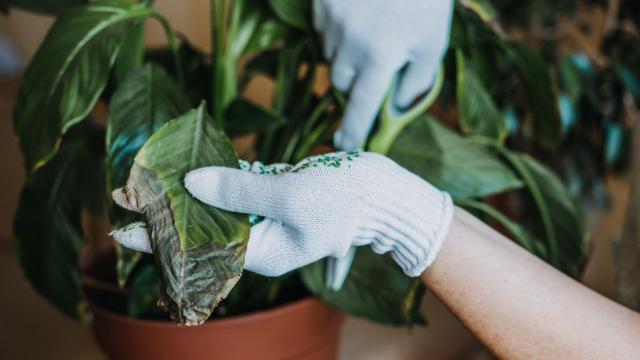You don’t drown by falling into the water; you drown by staying there (Edwin Louis Cole).
I’d say most potted orchid deaths arise from drowned roots. Conversely, I’ve seen people desiccate cacti believing they don’t need water. True, I scarcely water mine for six months in the year, but in high summer I water them weekly. My potted orchids instead enjoy a good shower all year round.
Houseplants all have their likes and dislikes. But once you know the rules of thumb, there are few homes in which you can’t grow a plant well.
I’m a botanist and my work takes me all over the world in pursuit of plants. Seeing a plant in the wild helps you understand how it is adapted to a given environment and how you can recreate that environment in your home. When I bring a new plant into my home, I ask: how would you grow in nature? And where would you be happiest?
The roots of Phalaenopsis (a popular indoor orchid) cling to tree branches in the wild. An orchid’s roots need air around them and they cannot withstand sitting in water. But showering the orchid regularly and allowing the water to drain freely mimics a tropical rainstorm, so it suits the plant perfectly.
In a rainforest in the Philippines, I once saw an Alocasia (a popular foliage plant with striking veins) growing just metres from a bird’s-nest-fern (another houseplant with glossy green fronds).
The Alocasia was growing on the shady forest floor and the bird’s-nest-fern was sprouting from the fork of a tree above it. The Alocasia likes filtered light, and much like orchids, the bird’s-nest-fern enjoys good drainage.
To grow a houseplant well, you must learn to think like a plant. So, here are my top tips for keeping your houseplants healthy.
1. Where should your plant go?
There’s a bewildering variety of plants available now that houseplants are taking over our homes. But it’s good to remember the old adage “right plant, right place”.
It’s no good growing a cactus in a shady corner – it simply won’t work. Start with the conditions you have in your home and go from there.
A bright, humid place such as a kitchen or bathroom windowsill is perfect for most tropical or subtropical houseplants. Cacti and succulents, which are adapted to live in deserts, instead need as much sunlight as possible all year round.
Many houseplants also thrive on a spell outdoors – typically from June to August. I place my succulents outside against a warm wall during summer.
But avoid moving a plant into full sun too quickly. Even a banana plant, which flourishes under tropical sun, can scorch if you change its conditions too abruptly.
2. When and how should you water?
Plants generally prefer liberal watering in the summer months when they’re growing actively, and far less in the winter. Taking this to extremes, I keep cacti and succulents in an unheated greenhouse and do not water them at all from October to April. Desert nights are cold, so many of these plants are surprisingly cold-hardy when dry.
By contrast, I keep a large Swiss cheese plant in a shady corner, and water it fortnightly in winter and weekly in summer. Like people, it thrives on routine.
But even then, it’s important to water all of your plants with lukewarm – and never cold – water. This enhances absorption and avoids temperature-shock. Using body temperature (37℃) water is a good rule of thumb.
Carnivorous plants, such as the Venus flytrap, that derive their nutrients from trapping and consuming insects instead need rain. They hate tap water.
4. Should you feed them?
Most houseplants will plod along with little or no supplementary plant food (such as a liquid fertiliser). But some, including foliage plants like rubber figs and Swiss cheese plants, will prosper if you do decide to feed them.
This is best given in the summer months when the plants are growing actively. I use tomato feed for just about all my houseplants in the summer. But the feed is very diluted for some plants, such as orchids, that can be sensitive to over-feeding.
Tomato feed for houseplants isn’t conventional but it works for me. Garden centres instead sell concentrated liquid feed specific for potted houseplants.
5. When to repot?
Many houseplants can withstand the same pot for a surprisingly long time, especially slow and steady growers like cacti. But if you keep foliage plants in warm conditions – particularly in homes with underfloor heating – they’re likely to need repotting regularly to avoid drying out.
When repotting, choose one or two pot sizes up. This allows for root space, but avoids an excess of stagnant compost.
It’s also important to use the right compost. Most plants do well in multipurpose compost – but not all.
Orchids prefer “orchid bark” that provides drainage and allows plenty of air around the roots. Carnivorous plants require specialist compost because they object to the high concentrations of nutrients formulated in multipurpose. And keep things green by avoiding peat – destroying peat bogs to make garden compost is environmentally damaging.
To allow your houseplants to flourish further, top-dress your pots with grit or shingle. This will keep fungus gnats (those pesky little black flies) at bay.
People often tell me they struggle to keep their houseplants alive. But keeping a thriving indoor thicket need not be difficult. Learning which plants to choose, how best to water and feed them, and how regularly they need repotting will all help to keep your indoor plants healthy.![]()
Chris Thorogood, Head of Science and Public Engagement for Oxford Botanic Garden & Arboretum, University of Oxford
This article is republished from The Conversation under a Creative Commons license. Read the original article.

Leave a Reply
You must be logged in to post a comment.